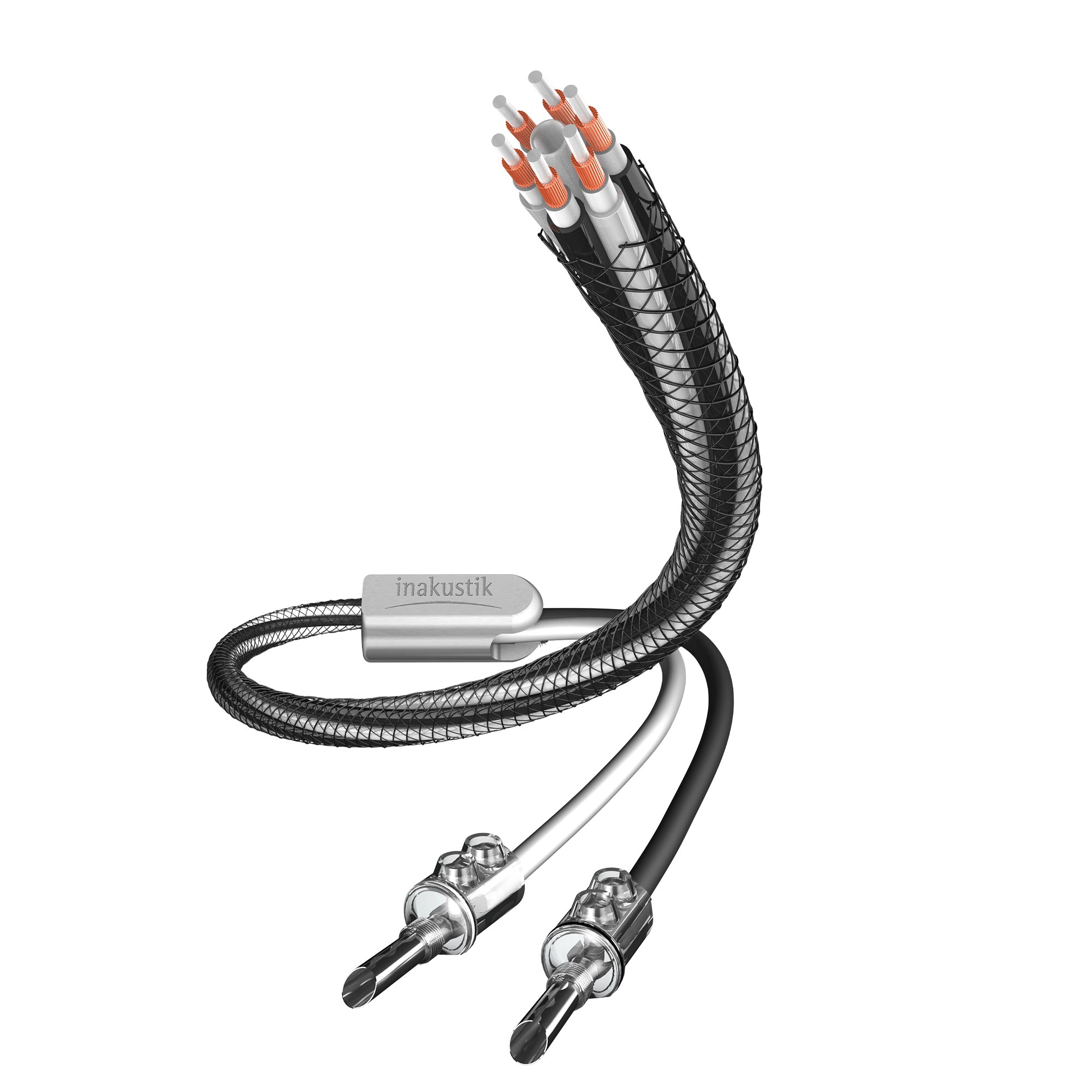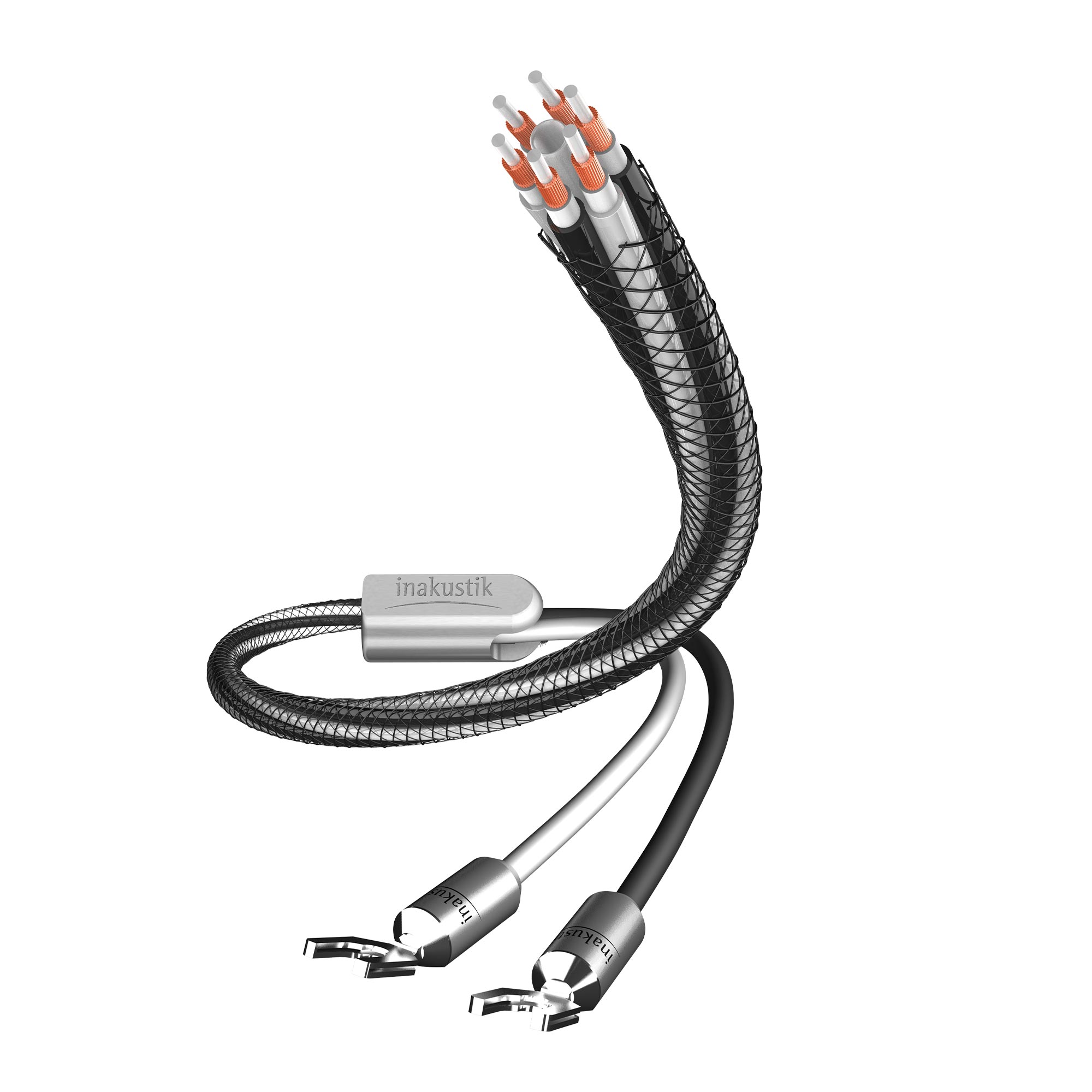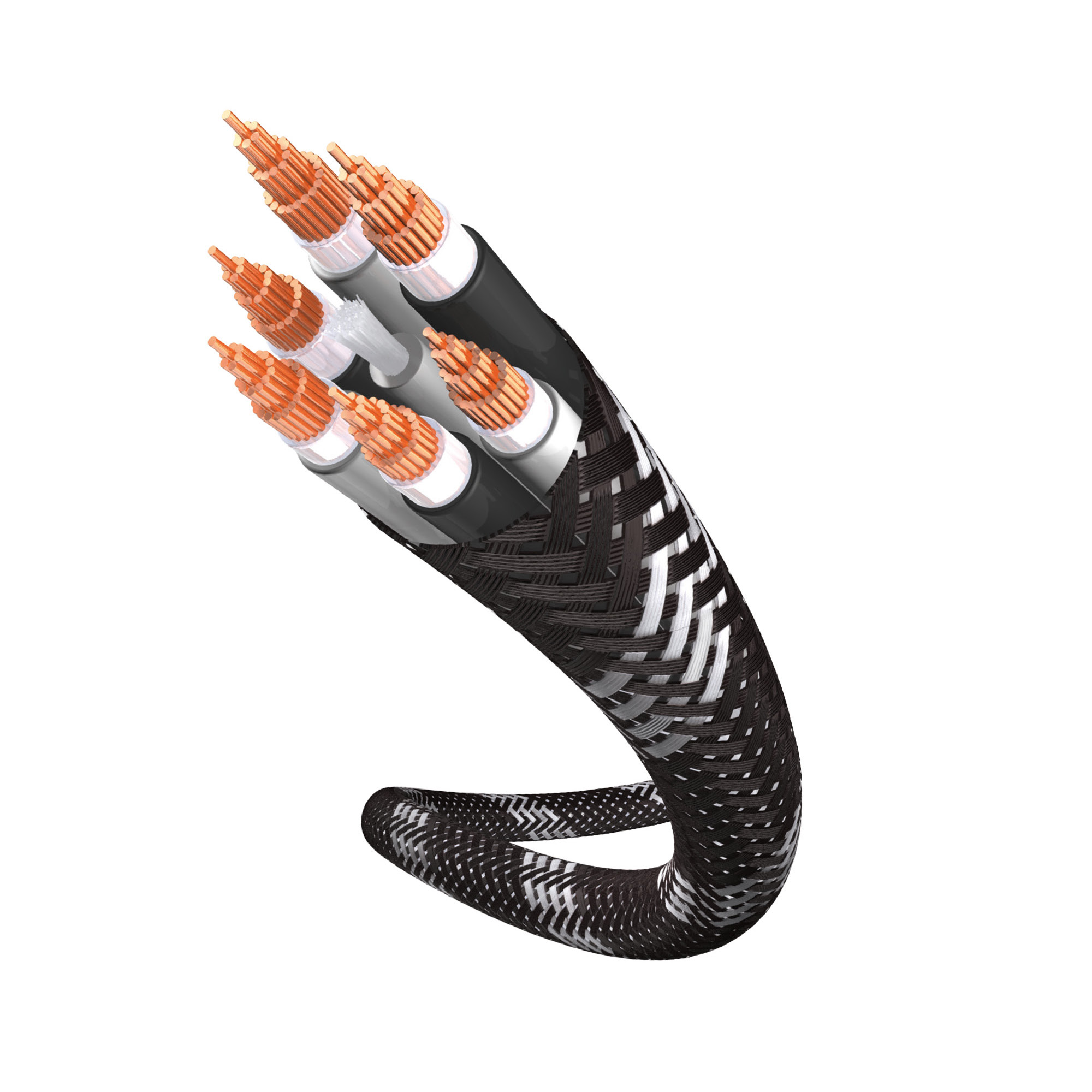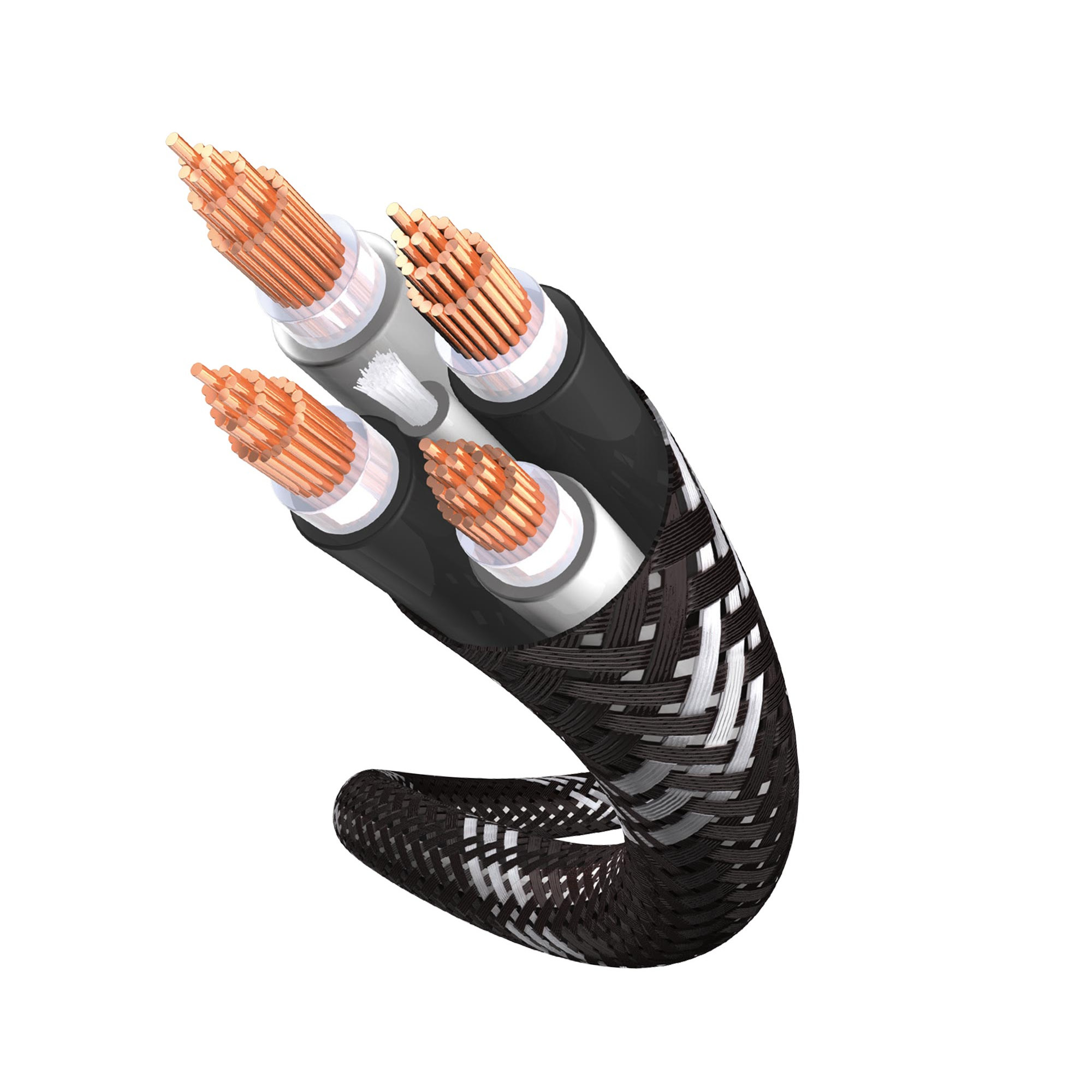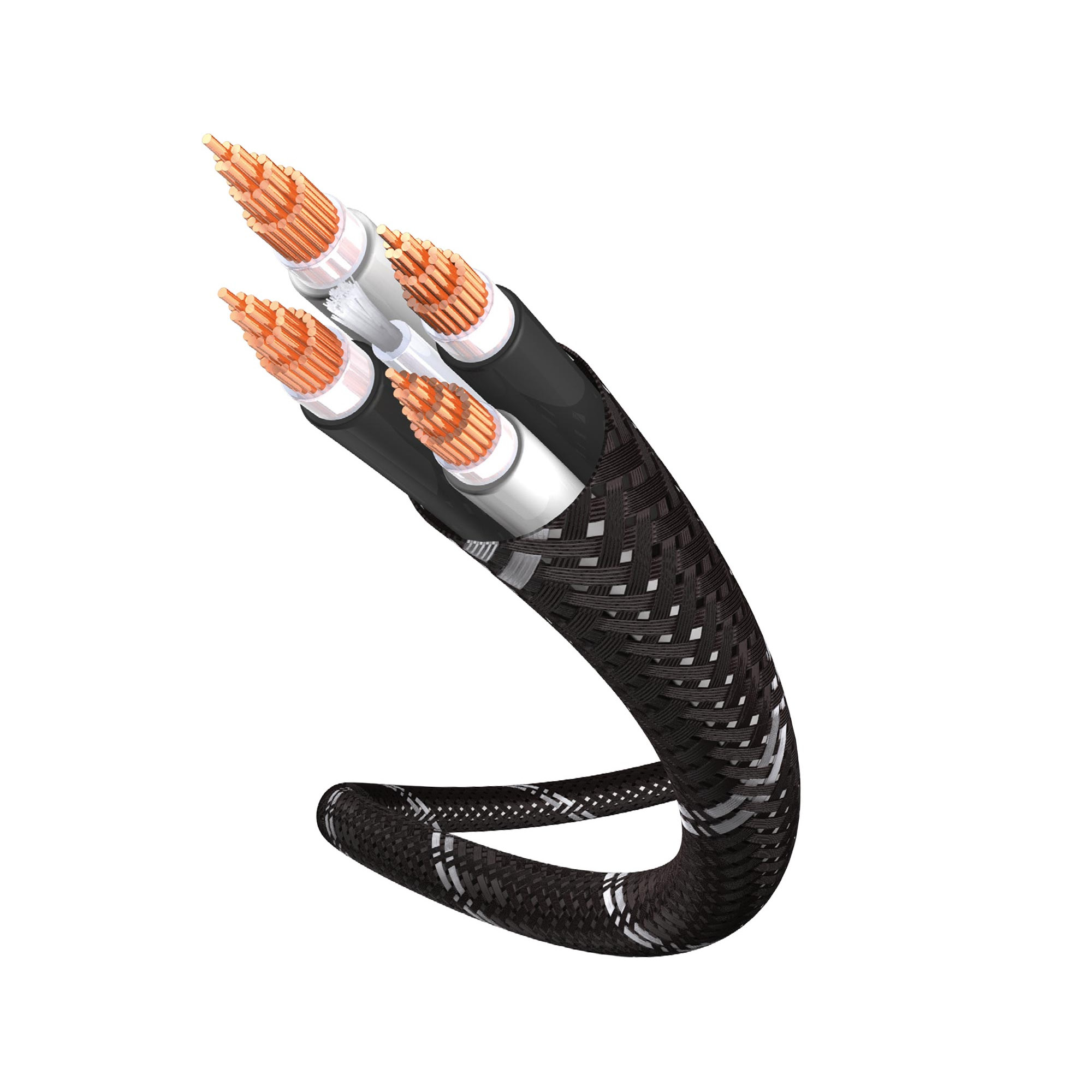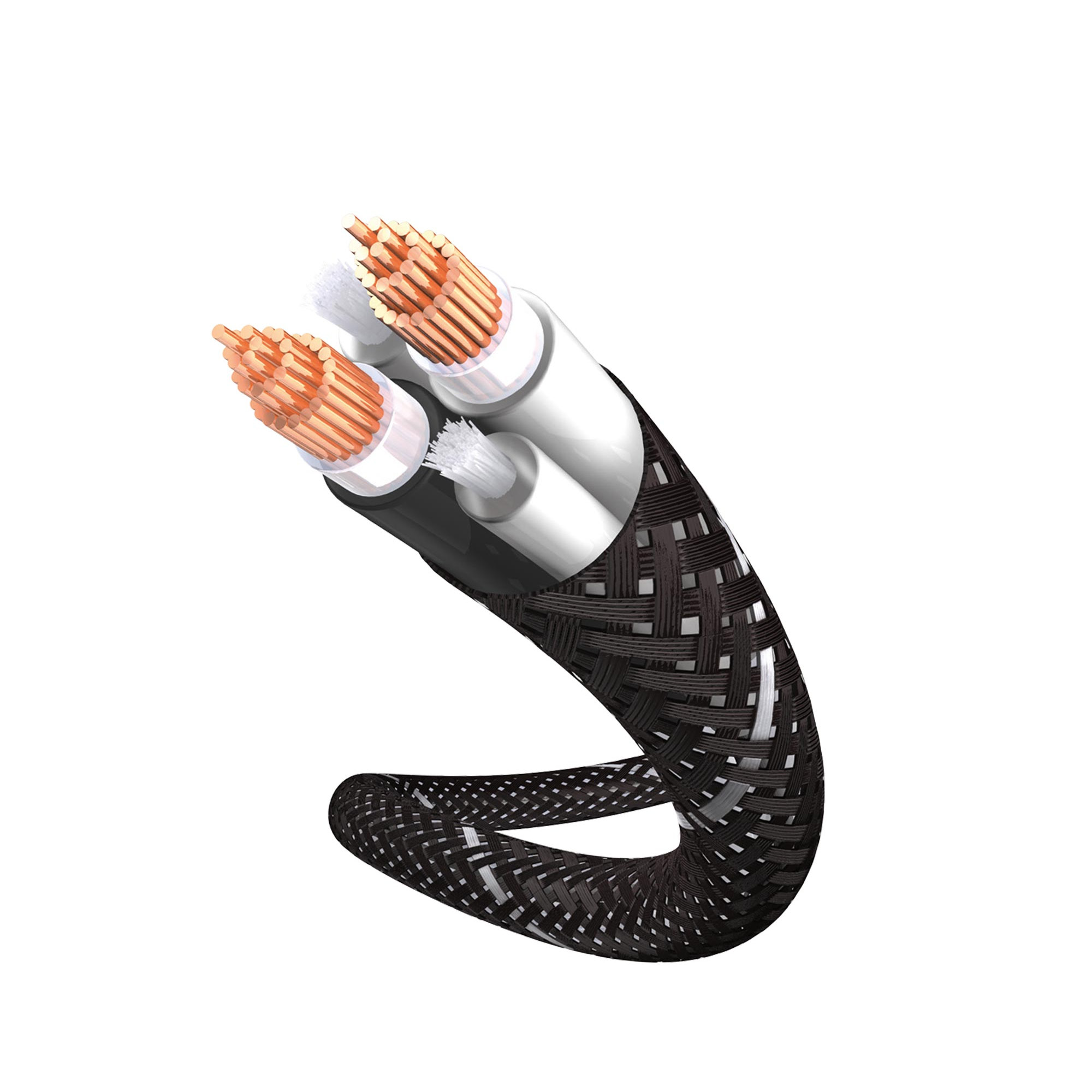Buying the right speaker cable
Choosing the right speaker cable can significantly impact the sound quality of your HiFi system. In addition to the conductor cross-section, the cable's inductance, or the construction of the cable, and other factors also play a role.
Conductor cross-section
The conductor cross-section should be large enough so that the current flowing through the cable can be transported with as little loss as possible. The higher the power of the amplifier and the longer the cable run, the larger the conductor cross-section should be.
Rule of thumb:
Standard: between 2.5 mm² to 4mm² for normal HiFi systems with cable lengths up to 5 meters.
Better Sound: 4 mm² or more for longer cables, powerful amplifiers, or an even better audiophile sound experience.
High-End: In audiophile music reproduction, special requirements are placed on signal transmission. Besides the cross-section, especially the cable architecture or the construction of the cable plays a crucial role.
What matters:
Higher Power: High-end speakers often need to be supplied with significantly more power than ordinary HiFi speakers.
Longer Cable Routes: In event technology, studios, or home cinema, cable routes of 10 meters or more are not uncommon.
Loss-Free Signal Transmission: To minimize sound losses and distortions, among other things, a thicker cross-section is necessary.
High-Quality Music Reproduction: Cross-sections up to 10 mm² for high power, long cable routes, and loss-free signal transmission.
Expanded Sound Spectrum: Thicker cables can transmit a wider frequency spectrum, revealing more details and nuances in the sound.
Dynamics and Precision: Improved dynamics and precision in the bass range as well as a clearer and finer resolution in the high-frequency range.
Future-Proof: A higher cross-section provides reserves for future upgrades of your HiFi system.
Cable inductance
The cable's inductance acts like a frequency-dependent resistance, which can dampen the high-frequency range. Therefore, a cable with low inductance is advantageous. This is achieved by a special construction of the cable, for example, through a multicore structure. The clever arrangement of conductors in the multi-layered multicore structures creates overlapping areas of magnetic fields that significantly reduce inductance. The entire frequency spectrum, including high tone frequencies and dynamic pulse sequences, are transmitted unhindered and without time delay. Music sounds more detailed. The sound is more dynamic. All details are worked out precisely and harmonically.
The construction of our audiophile AIR speaker cables is based on the multicore principle and thus reduces inductance.
Cable capacity
Particularly problematic for as loss-free signal transmission as possible is the capacity, since every cable has an electrical capacity. This behaves similarly to a battery that must be continuously charged and discharged by the components in the cable. These processes burden the audio signal, cause phase shifts, and influence the sound quality of the system. The capacity is influenced by various factors, such as the material with which the conductors are insulated (usually PVC, known as dielectric) and the distance between the conductors. Depending on which insulating material is used and how far the conductors are from each other, the capacity of the cable varies.
The AIR-Helix construction of our high-end speaker cables allows for the use of air as a dielectric (besides vacuum, the best possible dielectric) to keep the conductors at a consistent distance from each other throughout the entire length of the cable.
Experiment: Here you can learn how insulation and conductor distance affect capacity.
In summary
- The construction of the cable: The multicore construction reduces inductance.
- The insulation of the cable: Air as insulation (dielectric) minimizes the capacity
- The quality of the connectors: The connectors should be coated with very hard materials (e.g., Rhodium) to prevent corrosion.
- The material of the conductor: Copper is the most commonly used conductor material and achieves excellent sound properties depending on the degree of purity. Pure silver conductor is the best but also by far the most expensive conductor material. Not to be confused with silver-plated conductors, which tend to emphasize the high-frequency range!
Are losses on speaker cables measurable?
To get to the bottom of this question, we take you to our lab in an exciting webinar. In this webinar, we analyze the results of a measurement setup and consider what relationship might exist between sound and cable. In addition to the actual measurements, we also show you a very astonishing experiment.
What to expect in this webinar
- Measurements on speaker cables in the lab
- What is the damping factor and why is it important
- How is the damping factor measured
- Evaluation of the results
- Another impressive "sound experiment"
Here you can register for this and other HiFi webinars at the in-akustik academy
Buying high-quality speaker cables
Many HiFi enthusiasts wonder whether it's worth investing in high-quality speaker cables. The answer is not simple, as it depends on various factors. In addition to optimizing room acoustics, the correct placement of speakers, and the finely tuned selection of electronics, the appropriate cabling of your HiFi chain also holds significant potential.
Basically:
The higher the quality of the cable, the lower the losses. This means that more of the amplifier's signal reaches the speaker, making the music sound more detailed and powerful.
First-rate cables can also improve the spatiality of the sound image. The individual instruments and voices are more locatable, and the overall sound impression appears more natural.
Speaker cables from in-akustik in four quality levels
- Reference: Our most innovative cables made from the highest quality materials, based on the AIR Helix Point-to-Point technology for the unique audiophile listening pleasure - Made in Germany
- Excellence: HiFi speaker cables with perfected insulation and flexibility as the basis for a solid and powerful sound - Made in Germany
- Premium: Speaker cables for classic stereo or home cinema systems. Extremely easy to lay.
- Star: Universal speaker cables for a wide range of applications such as Home-Hifi, Car-Hifi, DJ, or home cinema areas
Buying high-end speaker cables from in-akustik
High-Quality Materials: Ultra-pure, oxygen-free copper for our top-class speaker cables - with silver cables, an even better sound experience is achieved.
Assembly: High-quality connectors and clean processing.
Made in Germany: All cables of the "Reference" quality level do not leave our manufacturing plant without a final quality control.
High-Quality Accessories for Speaker Cables
In addition to the speaker cables themselves, there are several useful accessories that can facilitate installation and use and can improve sound quality.
Here are some examples:
Banana plugs:
Banana plugs allow for a quick and easy connection between the speaker cable and speaker.
They are available in various designs, e.g., as straight or angled plugs.
For high-end systems, we recommend rhodium-coated plugs to prevent corrosion and contact resistance.
Spade connectors:
Spade connectors are also available in various designs. Our high-end versions are rhodium-coated and feature a slotted contact fork. The contact spring created by the slot deforms concavely when tightened, thus preventing the spade connectors from slipping out.
Cable bases:
The cable bases consistently keep the cable at a distance from the ground. This reduces unwanted capacities and relieves the electronics.


